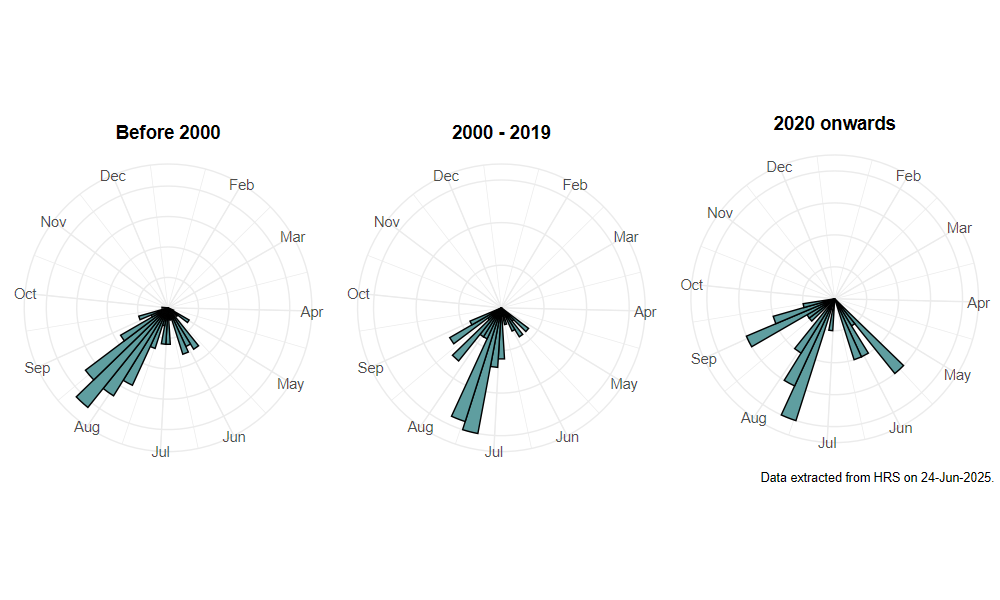Triglyphus primus Loew, 1840
Identification
Identification difficulty = 3. ![]()
![]() according to Ball & Morris, 20241
according to Ball & Morris, 20241
Biology
The range of habitats is broad, but generally points to an association with thermophilic environments including heathland, brownfield sites and dry grasslands. The larva is aphidophagous and appear to be specific to the galls induced by the aphid Cryptosiphum artimisae on Mugwort Artemisia vulgaris. Adults are elusive, but tend to be found visiting flowers. Very occasionally they can be numerous, visiting flowers of Wild Parsnip Pastinaca sativa and Wild Carrot Daucus carota.
Flight period
The following plots show the number of unique records per week excluding those reported to be of immature stages.

Status
Lower Risk (Nationally scarce) - Ball & Morris, 20142. Notable - Falk, 19913.
Distribution
Rather scarce and local in south-east Britain from around Dorset and Wiltshire eastwards, and north to about a line between the Mersey and the Humber. A number of recent records are associated with urban waste ground and field edges.

Trends
The following plots show the Frescalo TFactor vs year and a map of the rescaled frequency (all records) for the species.
-
Ball, S., & Morris, R. (2024). Hoverflies of Britain and Ireland. WILDGuides (3rd ed.). Oxford: Princeton University Press. ↩
-
Ball, S., & Morris, R. (2014). A review of the scarce and threatened flies of Great Britain. Part 6: Syrphidae. ( No. 9). Species status (pp. 1–130). Peterborough: JNCC. ↩
-
Falk, S. (1991). A review of the scarce and threatened flies of Great Britain. ( No. 39). Research and Survey in Nature Conservation (pp. 1–194). Peterborough: NCC. ↩